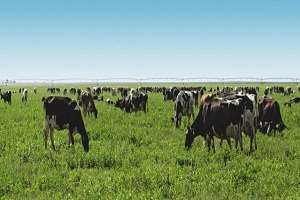By Jason Kosovski
As consumer interest in organic milk increases and the number of organic dairies continue to grow, more controlled research is needed to evaluate methodologies that help maintain and improve cow health, while using procedures that conform to organic regulations.

In an effort to support research in that area, the U.S. Department of Agriculture’s National Institute of Food and Agriculture has awarded a $1.4 million grant to a team co-led by Dr. Pablo Pinedo, a D.V.M. who is an assistant professor in the Department of Animal Sciences at Colorado State University.
In a collaborative initiative, researchers from the University of Minnesota, Colorado State University and Kansas State University will come together to test and develop new treatment strategies for organic dairies and take what they have learned to other producers and dairy practitioners throughout Colorado and across the country.
“Dairy is the second largest segment of organic agriculture,” said Pinedo. “So, we need to continue developing science-based approaches for prevention and treatment of disease. We need procedures based on studies that are supported by rigorous research. Our long-term goal is to contribute to a better health that will result in better cow welfare.”
Local partnership
One challenge facing organic dairy researchers is that organic dairies are typically much smaller than conventional dairies, making it hard to find animal populations of a suitable size for studies. To help overcome this challenge, Pinedo and the team are partnering with Aurora Organic Dairy, which will open the doors to its large herd in Colorado for this study.
“We are looking forward to working together with CSU to accomplish the goals set up by the different research trials,” said Juan Velez, chief agricultural officer at Aurora Organic Dairy. “Cow health and welfare are priorities for us.”
By collaborating with CSU veterinarian Luciano Caixeta, the team can leverage CSU’s strengths in veterinary research and animal sciences. Over the next three years, the study will focus on health concerns such as mastitis prevention, calf care and fly management. The team will also examine the economic impact of organic animal care.
“This grant will allow us to produce research focused on enhancing animal care, which is significant to this industry,” said Pinedo. “We will evaluate these animals throughout their entire lifecycle, from calves to cows, so that we can help them thrive and live healthy, productive lives.”
Source: colostate.edu